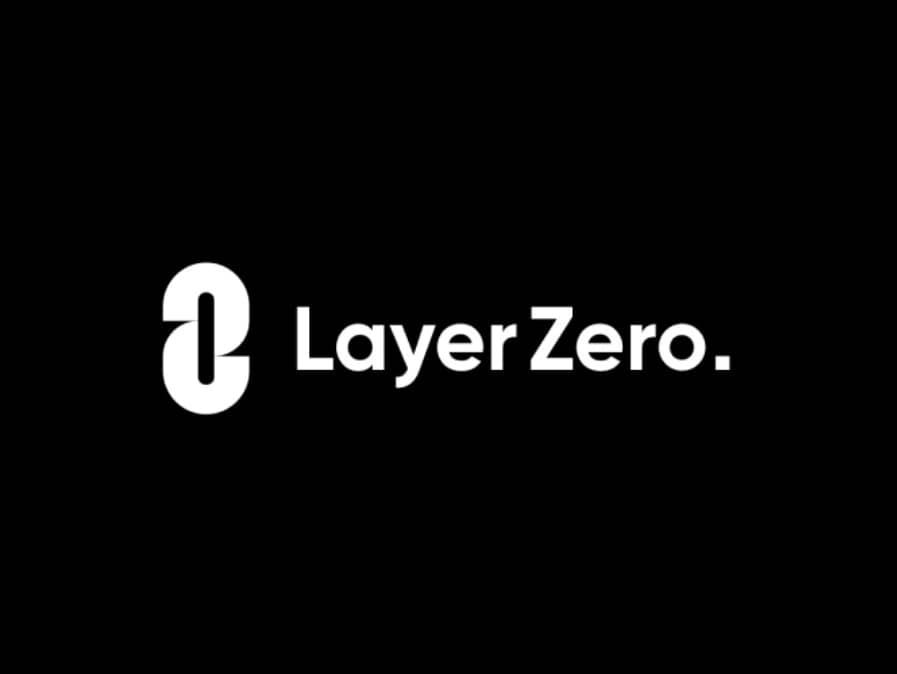订阅 wiki
Share wiki
Bookmark
LayerZero
LayerZero
LayerZero 是一个跨链互操作性平台,使开发者能够通过一个简单直接的界面创建在多个区块链上无缝工作的去中心化应用程序 (dApps)。LayerZero 由 Caleb Banister、Bryan Pellegrino 和 Ryan Zarick 于 2021 年创立,总部位于加拿大不列颠哥伦比亚省温哥华。[1][2][3]
概述
LayerZero 是一个消息传递协议,而不是一个 区块链。它利用每条链上的 智能合约、去中心化验证器网络 (DVN) 和执行器,促进 区块链 之间的无缝交互。LayerZero V2 于 2024 年 1 月 29 日实施,分离了消息验证和执行,使开发者能够更好地控制安全性和执行。它还提供增强的消息吞吐量、可编程性和其他特定于合约的改进,使其成为一个更灵活和高效的消息传递协议。 [12]
此次更新包括去中心化验证网络 (DVN),它取代了 V1 的 预言机,并允许任何能够验证跨链数据包的实体加入 LayerZero,从而促进去中心化。Axelar 和 CCIP DVN 的适配器可在 测试网 上使用,并将在启动时在 主网 上使用,计划在 2024 年增加其他适配器,以支持各种原生桥、第三方桥、中间链、预言机 和其他验证方法,从而防止供应商锁定。X of Y of N 验证功能提供了一种模块化方法,使应用程序能够通过选择 DVN 的组合来定制其安全性,从而根据特定需求优化成本和安全级别。 [12]
免许可执行引入了执行器,这是一个新的角色,它将目标链上的执行与验证分开处理,简化了 gas 支付并提供可定制的 gas 设置。每个应用程序必须配置一个安全堆栈,包括 DVN、执行器、链确认、消息库和链路径,从而完全控制安全设置。通过提供延迟或严格的 nonce 执行选项来实现更高的吞吐量,允许开发者选择按顺序或乱序的交易执行,从而使 LayerZero 的吞吐量与目标链的吞吐量保持一致,同时保持抗审查性。 [12]
改进的协议合约接口、特定于路径的库、新的设计模式和横向可组合性促进了增强的可编程性,从而促进了灵活性和不间断的跨链交易。统一的语义确保应用程序在所有具有 LayerZero 端点的区块链(包括非 EVM 链)上都能统一运行。最后,V2 的发布支持向前和向后兼容性,从而帮助在 V1 上构建的团队。 [12]
超轻节点
超轻节点 (ULN) 是一种新颖的跨链桥接和消息传递方法。ULN 结合了链上轻节点的安全性与中间链的成本效益。链上轻节点接收并验证每个区块头,用于相对链上的每个成对链,使其成为链之间传输消息的最安全方式,但成本很高。另一方面,中间链的安全性较低,但成本效益更高。 [4]
ULN 通过执行与链上轻节点相同的验证来解决这一难题,但区块头不是按顺序保存,而是由去中心化预言机按需流式传输。这消除了节点存储每个区块头的需要,降低了存储和计算开销,使其成为更具成本效益的解决方案。预言机有动力提供准确可靠的区块头,从而确保链之间传输消息的安全性。 [4]
LayerZero 的基础设施
全链网状网络
LayerZero 通过提供一个统一且紧密连接的网状网络,解决了现有跨链网络的局限性,这些网络通常存在连接稀疏和通信接口不一致的问题。跨所有支持的区块链。全链网状网络允许任何链直接与其他链通信,使用可预测和稳定的接口,促进跨区块链的无缝数据和价值转移。尽管各个区块链之间的安全语义和设计逻辑各不相同,但 LayerZero 协议在所有连接中保持一致的安全性和可靠性。[15]
该网络确保数据包传递的统一标准,可靠的数据传输且无审查,并且数据包仅一次传递到其预定目的地。LayerZero 的模块化安全模型提供可配置和不可配置的安全保证,允许开发者选择最适合其应用程序的安全和成本效益模型。去中心化验证者网络 (DVN) 验证消息,并且可以由应用程序配置,而可配置的区块确认可防止源链上的区块重组。核心安全功能,例如防止审查、重放攻击和未经授权的代码更改,都内置于网络的不变接口中。[15]
该网络认识到每个路径可能需要不同的安全配置。路径由源区块链、源应用程序、目标区块链和目标应用程序定义,可以单独配置,以根据每个连接的特定需求定制安全性和成本。这种与链无关的方法使开发者能够创建在区块链之间无缝运行的全链应用程序 (OApp)。[15]
端点
LayerZero Endpoint是一个不可变的智能合约,为全链应用 (OApp) 提供了一个标准化的接口,用于管理安全配置并无缝发送和接收消息。LayerZero Endpoint分为四个模块:通信器、验证器、网络和库。通信器、验证器和网络模块构成了端点的核心功能,而新链则作为额外的库添加。这种设计允许轻松支持新链,而无需修改核心模块。 [3][17]
实用性
LayerZero 是一个区块链基础设施,为开发者和用户提供一系列实用工具。其主要功能包括跨链去中心化交易所、多链收益聚合器和多链借贷。这些实用工具允许在不同链之间无缝转移原生资产跨不同链,访问高收益机会,以及具有成本效益的借贷选择。 [17]
跨链去中心化交易所
LayerZero 促进了一个跨链去中心化交易所 (DEX),该交易所仅使用原生资产运作。与使用封装代币或通过中间侧链的传统DEX设计不同,LayerZero 能够实现DEX,在两个链上都具有流动性池,允许用户在一个链上存入他们的原生资产,并从另一个链上提取原生资产。借助 LayerZero 的消息传递功能,可以直接实现桥梁、自动化做市和其他定价模型。[17]
多链收益聚合器
当使用 LayerZero 进行跨链交易时,多链收益聚合器可以挖掘 across 多个生态系统中的高收益机会,最大限度地利用市场低效率,并允许用户利用市场低效率。与限制其在当前生态系统之外的收益机会的单链收益聚合器相比,这将是一个改进,而是提供更多收益机会供选择。 [17]
多链借贷
LayerZero上的多链借贷允许用户利用不同链上的机会,同时将资产整合到他们喜欢的链上。通过借贷协议,用户可以在他们喜欢的链上借出他们的资产,并在另一个链上直接借入所需的资产,从而消除了昂贵的中间步骤,如桥接和交换费用。 [17]
全链同质化代币 (OFT) 标准
LayerZero 的全链同质化代币 (OFT) 标准是一个框架,用于创建可以在多个区块链之间转移,同时保持单一、统一供应的代币。[25] [26] 与传统的跨链桥“包装”代币(在目标链上创建单独的合成版本)不同,OFT 标准采用了一种销毁和铸造机制。当用户转移 OFT 时,代币在源链上被销毁,并在目标链上铸造等量的代币。这种过程避免了与包装资产相关的流动性碎片化和安全风险。[25] [27]
OFT 标准对于稳定币尤其有利,因为它有助于维持其挂钩,并确保不同生态系统之间的一致流动性。通过消除包装代币和转移中对流动性池的需求,它可以避免滑点和链之间的价格不一致。[25] 发行人还可以控制其资产,因为他们自己的智能合约管理铸造和销毁逻辑。他们还可以通过去中心化验证器网络 (DVN) 配置自己的安全性。[27]
PayPal 的 稳定币 PYUSD 是采用的一个关键例子。2024 年 11 月,PYUSD 集成了 OFT 标准,以实现 以太坊 和 Solana 之间的无缝转移。[27] 这使得 PYUSD 持有者可以在两个网络之间转移他们的资产,而无需依赖中心化平台或第三方桥。跨链转移由发行人 Paxos 选择的 DVN 保护,其中包括 Google Cloud 和 LayerZero Labs 等验证器。[27] [25]
2025 年 6 月,Skate 是一个专注于创建统一的多链执行生态系统的项目,为其原生 SKATE 代币集成了 Stargate 的 LayerZero OFT。这种集成允许 SKATE 代币在包括 以太坊、Arbitrum 和 Solana 在内的多个区块链之间移动,从而增强了其流动性和 dApp 互操作性的可访问性。OFT 标准的使用确保了转移具有成本效益并且没有滑点。[26]
OFT标准已被稳定币和代币化资产领域的主要参与者进一步采用。2025年1月,Tether与LayerZero合作推出USDT0,这是其USDT稳定币的跨链版本,使用OFT标准。该版本在Kraken的layer-2区块链 Ink上首次亮相,旨在统一跨多个网络的流动性。[\28](#cite-id-MVr1gbBMRz) 该标准也被用于代币化的比特币,当Wrapped 比特币 (WBTC) 的托管人BitGo在2024年9月选择LayerZero作为其互操作性提供商,以将WBTC扩展到BNB Chain和Avalanche等链时。[\29](#cite-id-dMrv8RpAQV) 此外,代币化的现实世界资产协议Ondo Finance使用OFT标准在包括Solana在内的网络上于2024年11月推出其生息稳定币 USDY,使其在不同的区块链生态系统中具有同质性。[\30](#cite-id-IlZ96vn4sp)
LayerZero 空投
2024年6月14日,LayerZero 团队推出了“LayerZero 基金会”,同时,LayerZero Labs 的首席执行官 Bryan Pellegrino 在 X 上发布推文,公布了他对 ZRO 代币空投的计算结果;[18]
好的,让我们谈谈一些数字。23.8% 的供应量将直接分配给社区和建设者。这不包括基金会、增长等。直接分配给社区。其中 8.5% 将在第一天分发(5% 核心,3% RFP,0.5% 社区池)。剩余的大部分将在未来 36 个月内分发,每 12 个月进行一次额外的追溯分配,同时为建设者提供一些前瞻性的 RFP.... - 他于 2024 年 6 月 14 日发推文 [13]
根据该推文,ZRO 的供应量为 10 亿,其中 23.8% 保留用于分配给社区和建设者。23.8% 不包括基金会、增长和其他负责人。分配给社区和建设者的代币中,8.5% 将在空投的第一天分发;其余部分将在三年内分配。该项目计划每 12 个月进行一次额外分配,并为生态系统中的建设者提供一些前瞻性的提案请求 (RFP)。[14]
LayerZero Labs 还提到 6 月 20 日为代币的空投日期,同时要求用户通过官方网站确定其资格状态。[19]
合作伙伴关系
- Google Cloud
- Polyhedra
融资
2021 年 4 月 1 日,LayerZero 筹集了 200 万美元,这是他们的首次种子轮融资。 [2][20]
2021 年 9 月 16 日,LayerZero 的 A 轮融资由 币安实验室 和 Multicoin Capital 领投,筹集了 600 万美元。其他投资者包括 Sino Global Capital、Defiance、Delphi Digital、Robot Ventures、Spartan、Hypersphere Ventures、Protocol Ventures、Gen Block Capital 和 Echelon Capital。 [2][5]
2022 年 3 月 20 日,LayerZero 的 B 轮融资由 a16z、FTX 和 Sequoia 领投,筹集了 1.35 亿美元。一些主要投资者包括 Coinbase Ventures、PayPal Ventures、Tiger Global 和 Uniswap Labs。 [6][7]
Pudgy Penguins
2023年1月26日,手绘企鹅NFT收藏项目Pudgy Penguins与LayerZero合作,允许其NFT在不同链across之间转移。Pudgy Penguins选择与Polygon、BNB Smart Chain和Arbitrum合作,因为它们的使用率和曝光率不断增长。Polygon因其吸引新用户加入Web3社区的能力而被选中,BSC因其低gas费用和对包容性的承诺而被选中,Arbitrum因其适合DeFi开发而被选中。通过将Pudgy Penguins NFTs桥接到任何选定的链,用户将收到一个SoulBound代币,作为与其wallet相关的纪念品。Pudgy Penguins和LayerZero之间的这种合作使该项目能够让新的Web3用户轻松成为生态系统的一部分,而无需担心高gas费用,从而提供“出处和用户体验”。 [11][21]

Initia Labs
2024年7月10日,LayerZero和Initia合作开发Cosmos的互操作性标准,使基于Cosmos SDK的链能够连接到支持LayerZero的链,实现全链互操作性。 [16]
Stargate 收购
2025年8月,LayerZero 以 1.1 亿美元的价格收购了跨链协议 Stargate。 [23] 在此收购之前,经过了一场激烈的竞标,LayerZero 的报价优于几个竞争对手的提案。 [22]
这场竞标战引起了其他主要互操作性协议的兴趣。Wormhole 提交了 1.2 亿美元的 USDC 竞标,比 LayerZero 的报价高出 1000 万美元。 [23] [22] 此外,Axelar Network 和 Across Protocol 也表示有兴趣收购 Stargate,尽管该过程是按照 LayerZero 的提案进行的。 [22] [24]
此次收购获得了 Stargate 社区 DAO 的批准,在投票中,95% 的参与者赞成该交易。 [23] [22] 投票结束后,Stargate DAO 正式解散。 [23] 此次收购使 Stargate(最初由 LayerZero 于 2022 年开发和推出)重新回到其控制之下,使该桥的未来发展与 LayerZero 的战略愿景保持一致。 [22]
团队
领导团队
- 研究主管: Daniel P. Ahn
- 战略主管: Max Glassman
- 人才主管: Richard Dietrich [8]
执行团队
- 联合创始人兼首席执行官: Bryan Pellegrino
- 联合创始人兼首席技术官: Ryan Zarick
- 首席运营官: Ari Litan [9]
董事会
- 天使投资人: Rob Sadow [10]
发现错误了吗?
